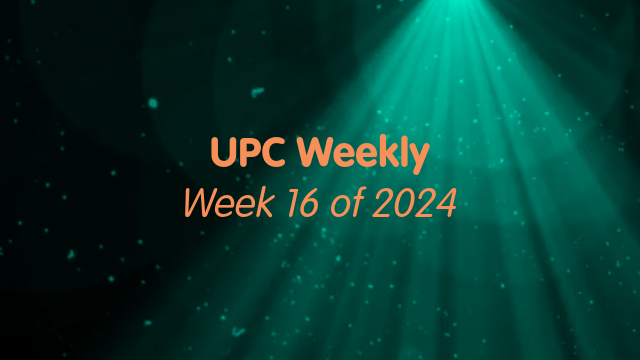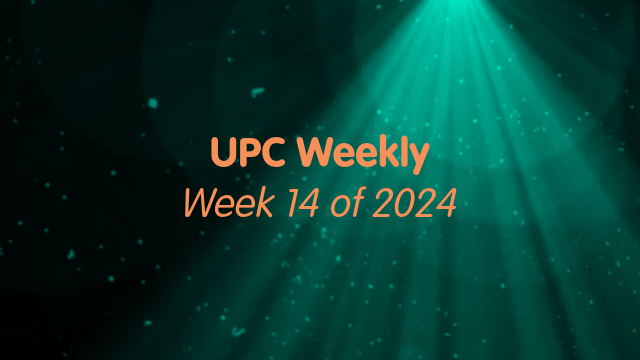
In our new magazine Forward, we interview C Hunter Baker of Wolf, Greenfield & Sacks PC. Hunter explores a typical drug development timeline and suggests strategies that can help extend a drug's patent life.
'Effective patent lifecycle management is mission -critical in the field of medicine,' says C Hunter Baker, chair of the pharmaceutical practice group at US intellectual property law firm Wolf, Greenfield & Sacks PC. and a Harvard-trained medical doctor. It is, Baker explains, 'an important way for a company to extend patent exclusivity - in tandem with regulatory exclusivity - to secure greater time for earning money on the product'. This allows the companies involved in creating a new pharma product to recoup the investment devoted to all the research and development (R&D) that went into coming up with the molecule, running the clinical trials and developing the formulation, he says.
In light of pharma's unique IP challenges, what are the key milestones that a company will encounter along the patent lifecycle journey? And what does Baker suggest as a best-practice approach for each one? Offering the example of a fictional Company X, he shares his thoughts here...
1. Inception: timing is everything
After conducting an R&D drive, Company X arrives at a series of what are called 'hit compounds': molecules with a desired biological activity. Its next step is to select a 'lead compound' from that series with which to move forward - one that it will put through animal studies and then, if it passes, into human clinical trials. This is called 'nominating' a compound.
In terms of filing a patent application, Company X could wait until it is on the brink of nominating a lead compound, when it has at least narrowed the field down to a few examples. Its patent application could include all those compounds as a broad genus, to keep competitors out of that space.
You want to do this as late as possible, but before clinical trials. If Company X can hold off filing for two or three years during the drug discovery phase, it will buy more time on the back end of the patent's term. I would recommend filing around the time you're deciding which compounds to put into animal models.
2. Early days: initial protection
Company X has now filed its initial patent application, comprising a claim specifically directed to its drug candidate. But, during the run-up to clinical trials, it may find that the drug is best delivered via a particular formulation. Does it work best as a salt form, a polymorph or a cocrystal? And how is it formulated - in eye drops, tablets or transdermal patches?
You want to protect any composition of matter that involves your new chemical entity, so filing further patent applications for that purpose will be required as the company approaches trials in humans. The same applies to dosing regimens and any indications of the drug's effects on specific forms or mutations of the target disease.
3. Patent drafting: clarity is key
Before Company X even puts pen to paper, it must carry out a thorough prior-art search and patent landscape study to ensure that the new drug will have freedom to operate in the desired area of the medical market. At drafting stage, clarity of language is critical for patent quality. And, if we turn to structure, the application will ideally be layered, ranging from broad to narrow claims, thereby containing a variety of fallback positions.
The narrowest, most important claims must be rock solid to ensure that no one can say they are either indefinite or overbroad.
4. Manufacturing: a crucial moment
Let's say Company X's clinical trials have met with success and regulatory approval, and it has called the new treatment 'NewDrug'. Because it is not a large company, it must reach out to a manufacturer to get NewDrug to market. Before it talks to any potential manufacturing partners, the company must be 100% sure that it has its stake firmly in the sand in terms of all the IP coverage described so far.
It may be the case that the chosen manufacturer is able to improve on the formulation of NewDrug that Company X has devised. That advancement will definitely require coverage in a further patent filing and the companies will need to negotiate shared ownership - typically before any collaboration begins. AU of those talks – whether at the early stage of scoping out the deal, or settling on stakes in any follow-on IP - must take place under strict non-disclosure agreements (NDAs).
Follow-on patents are important stages of the lifecycle journey: they enable companies to extend protection for their products via new IP filings, the terms of which will outlast those of the initial patents filed on the core compound(s). So they are crucial tools for buying exclusivity time.
5. New use: the element of surprise
This is a fascinating part of the journey: medicines developed to answer specific needs are sometimes shown to have efficacy with other conditions. For example, the osteoporosis drug raloxifene went on to become a breast cancer treatment, while the breast cancer drug tamoxifen was found to have potential in tackling bipolar disorder. New uses are typically discovered by creative scientific researchers, who draw links between the properties of existing drugs and problems that remain to be solved in the clinic.
The advantage is that the drug has already been put into humans. Toxicology studies are a known quantity, and you can expedite the approval process. So, if Company X discovers that NewDrug has a new use, that will definitely require coverage in a fresh patent filing.
6. Licensing: finding a partner
Every business scenario is unique, so there are no general rules here. But let's say that NewDrug is a dermatological drug that is found to ease migraines. As a smaller company, Company X doesn't have the resources to support the new use, so it licenses that business out to a more experienced partner in exchange for agreed royalties. The same could apply to an alternative formulation that may require outside expertise to make and market.
Licences will typically include milestones - 'Company X will pay us half a million dollars when regulators approve NewDrug's new-use version', say. Or the milestones are sales-based, with the partner's royalty slice increasing once sales hit specific markers. But they essentially incentivise the partner to keep its side of the bargain. NDAs have a role here, and any improvements that stem from the collaboration(s) will require further IP coverage.
7. Loss of exclusivity: generic threats
Under US law, a new drug enjoys a period of regulatory exclusivity, with the duration determined by what type of drug it is. This is designed to ensure that innovators have a clear run at the market without generics encroaching on their turf. (In Europe, similarly, there is a period of data exclusivity following marketing authorisation, during which an innovator company's pre-clinical and clinical trials data may not be referenced in the regulatory filings of another company for the same drug substance. There is also an additional period of market exclusivity during which a generic company may not market an equivalent version of the originator's pharmaceutical product.) However, towards the end of that period, generic manufacturers will begin to file lawsuits against the innovator to invalidate the patents behind what has hopefully become a successful product.
If we take Company X as a representative case, the nucleus of primary patent(s) covering the active compound(s) in NewDrug will typically remain safe. Instead, the generic companies will go after the extended family of follow-on patents: those covering derivatives and variations, such as improvements, compositions, formulations and new uses.
For example, if NewDrug is a dermatological drug, perhaps Company X found that it is particularly effective for treating a specific variant of the target skin disease and filed a patent for that. But the lawyers for a generic manufacturer could say: 'That's obvious - it's something anyone would try, based on the prior art.' And they may be able to convince a court of that. So generics will try to raise a question mark over a follow-on patent's inventive step.
8. Post-patent: recognition can continue
You may ask what kind of stake Company X will have in NewDrug when the core patent finally expires. And, yes, it will certainly be charging less for the drug to compete with the generic versions that, by then, will no doubt have flooded the market. However, this is the point where brand recognition will continue to matter: Company X will still be identified and renowned as NewDrug's creator, so that will work in the company's favour as it lines up its next endeavour(s) in R&D and product development.
In addition, patients may have been using Company X's classic formulation of NewDrug for some time and may be reluctant to switch to a generic version made by somebody else. As such, NewDrug will retain its cachet - and, in that sense, the drug's trade mark will take over the role of supporting its ongoing presence as an IP-protected medicine.
Danger: avoid a deadly disclosure
'I cannot stress enough the extent to which badly timed public disclosures negatively impact a compound's patentability,' warns Baker. 'These could take the form of a report in the popular media, an abstract in a scientific or medical journal, a conference announcement, or even early talks with potential investors or partners. Above all, ensure that you've filed your patent application before making anything that could be considered a public disclosure.’
Life-support team: who should be on the corporate team that nurtures new drug developments through the patent lifecycle?
'I advise any company I represent to ensure its patent attorney holds regular meetings with its scientists, doctors and regulatory compliance officers, who can share insights into difficulties the R&D unit is facing with creating a new compound and/or formulating the drug,' says Baker. 'Documenting those challenges is important. One of the most effective ways to rebut any obviousness rejections during patent prosecution is to be able to say: "Formulating this drug was tough - it was incredibly insoluble, so we couldn't get good pharmacokinetics [the ways a drug moves around the body]. But we reformulated it in this fashion, with these excipients, and got a great drug. So we finally hit the mark after a year or two." That makes a very convincing case to a patent examiner.
'If there are going to be business deals, patent and corporate attorneys will certainly be involved, as will members of the C-suite. A strong in-house legal team will know when it needs to reach out for external help, and outside counsel can assist with putting together agreements or embarking on litigation.'
View the article as it appears in Forward magazine.
To read the rest of Forward magazine, sign up here.
If you have any questions about lifecycle management, please contact Emily Hayes, partner in our life sciences group.
The names 'NewDrug' and 'Company X' are used for illustration only, and are not intended to refer to any existing brands of entities.
Most of Emily’s work is in the Life Sciences sector, with a focus on biotechnology. Emily has extensive experience drafting and prosecuting patent applications, as well as global portfolio management, which means that she has experience prosecuting applications not just at the European Patent Office, but worldwide. Emily has a sizeable oppositions and appeals practice and she is extremely experienced at handling hearings before the EPO.
Email: emily.hayes@mewburn.com
Sign up to our newsletter: Forward - news, insights and features
Our people
Our IP specialists work at all stage of the IP life cycle and provide strategic advice about patent, trade mark and registered designs, as well as any IP-related disputes and legal and commercial requirements.
Our peopleContact Us
We have an easily-accessible office in central London, as well as a number of regional offices throughout the UK and an office in Munich, Germany. We’d love to hear from you, so please get in touch.
Get in touch

